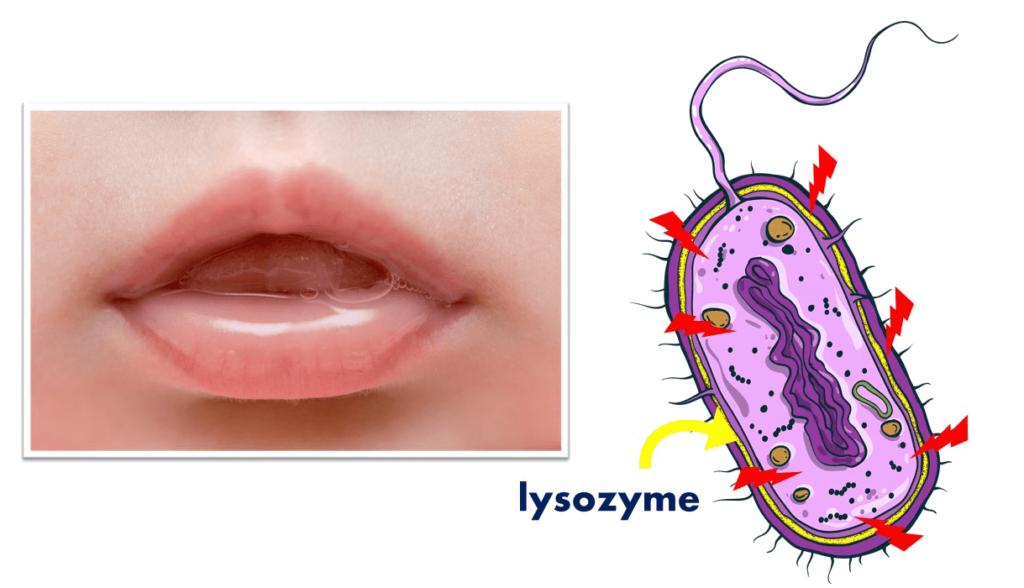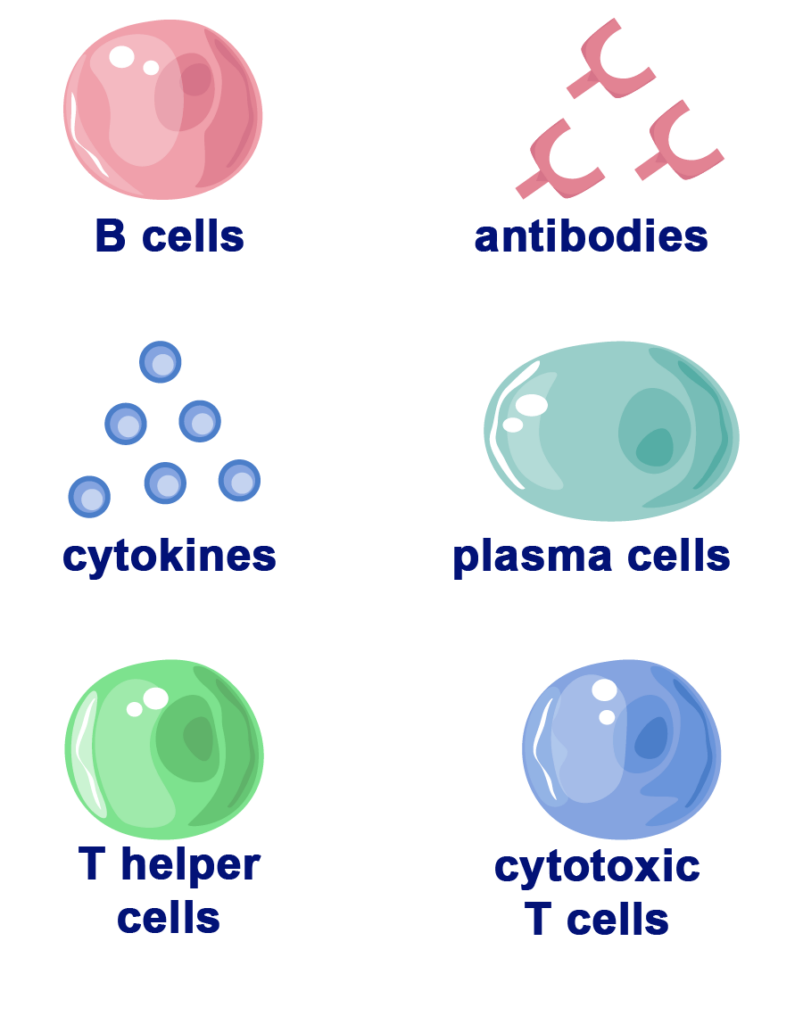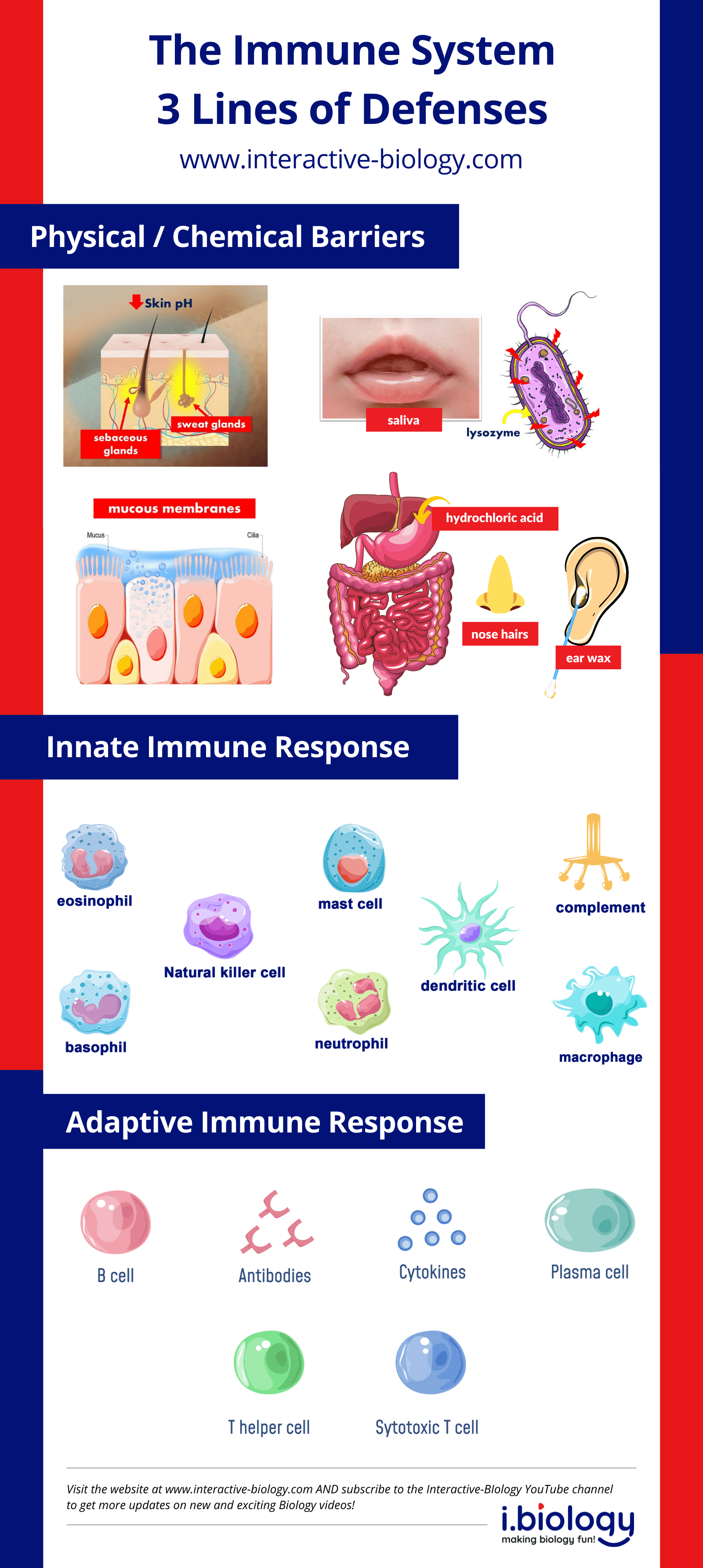Click here to comment on YouTube
Our immune system functions to protect our bodies from harmful invaders. But how exactly does it do what it does? By the end of this post, you’ll have a better understanding of how the immune system functions.
Topic Outline:
Three Lines of Defense
The immune system is a complex system that includes different cell types and organs. Their function is to block, destroy or neutralize any harmful substances that could enter the body.
And when we look at the immune system, we see that there are three lines of defense. These are three different mechanisms that these foreign invaders need to overcome to get into our bodies to cause harm. They are
- The physical and chemical barriers
- The innate immune response (nonspecific and less effective)
- The adaptive immune response (specific and more effective)
Physical and Chemical Barriers
These are things like the skin that covers our body. That’s a physical barrier that pathogens have to cross to get into our bodies.
Along with the skin, we have sweat glands that secrete sweat, and sebaceous glands that secrete an oily substance.
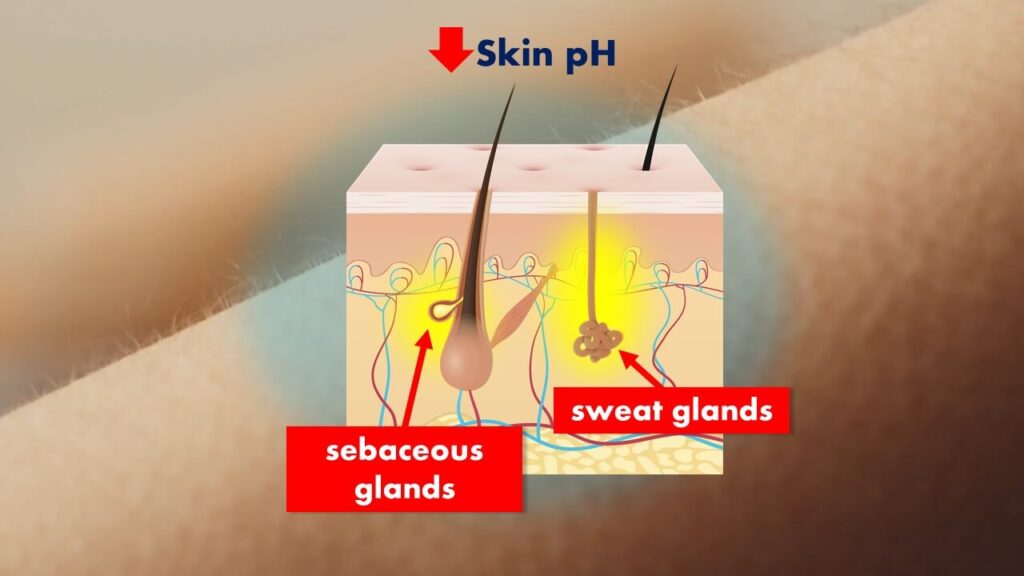
These help lower the pH on the skin, making it more acidic. They also wash away the harmful stuff, making it less likely that these foreign microbes will get into our bodies and have detrimental effects.
Then, in our mouths, we have saliva. Saliva has different enzymes in it, one of which is lysozyme. Lysozyme is an enzyme that will break down bacterial cell walls, which is good because you’re killing bacteria.
If some pathogen does get past your saliva and into your stomach, it will encounter hydrochloric acid. That acidic environment makes it harder for those harmful microbes to survive.
We also have the mucous membranes that line our digestive and respiratory tracts. These traps pathogens that get in our body when we breathe preventing them from getting far enough inside to cause issues.
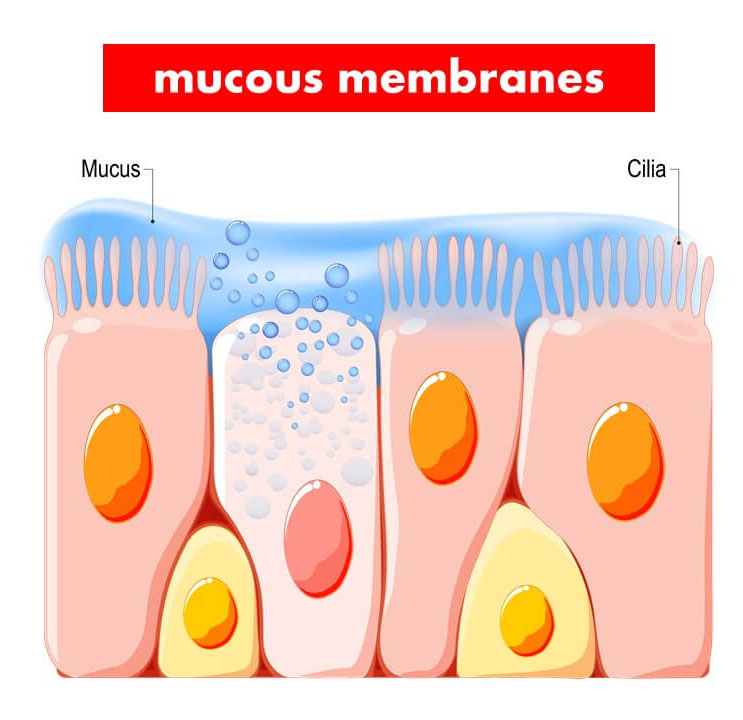
We even have nasal hairs and earwax. They will also trap pathogens. Again, the goal here is to stop stuff from getting in.
That’s our first line of defense – the physical and chemical barriers. We’re trying to stop the foreign invaders at the point of entry.
Now, obviously – some stuff will still get past those barriers. And we need more protection on the inside. So let’s move on to the second line of defense.
The Innate Immune Response
This is a nonspecific response to those pathogens that manage to get past the first line of defense. It involves a variety of specialized cells and proteins. They recognize and help to get rid of pathogens more generally.
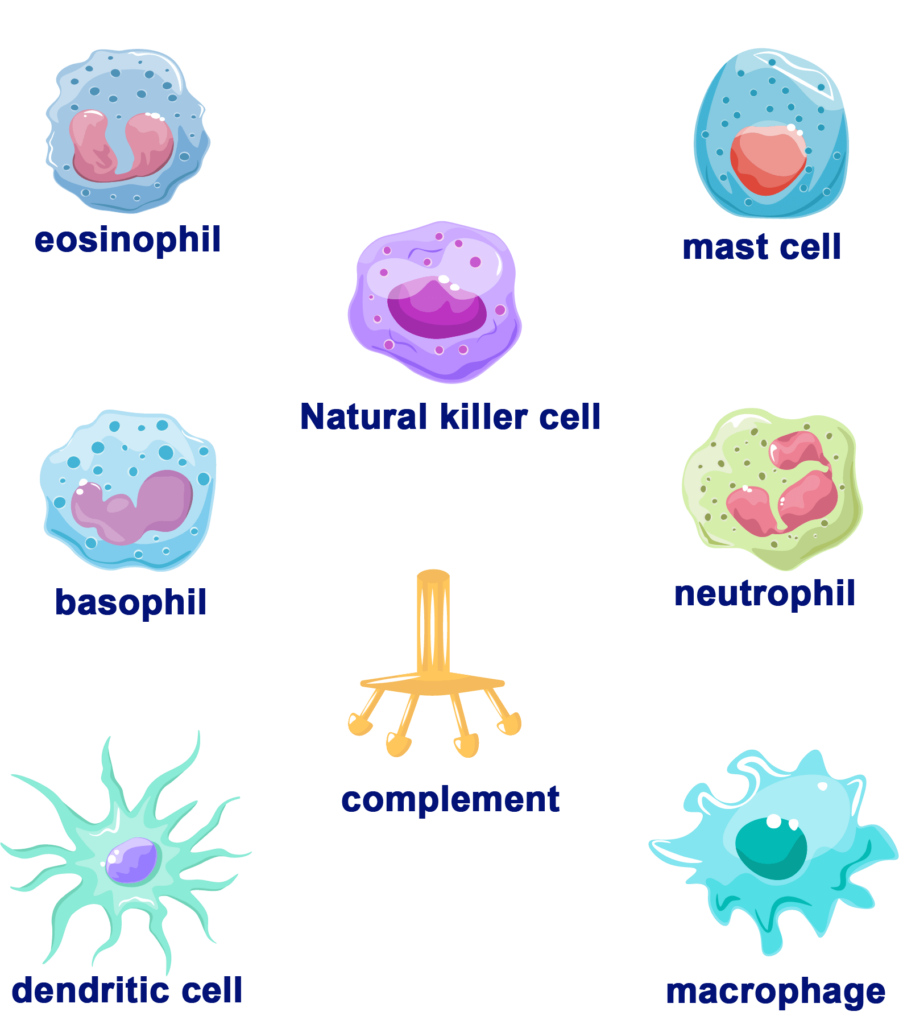
We’re dealing with phagocytes that will recognize foreign pathogens. They then swallow them up using a process called phagocytosis.
First, they bind to the pathogens and then wrap their cell membrane around the pathogen to take them in. Once the pathogens are inside, they will try to destroy the pathogens.
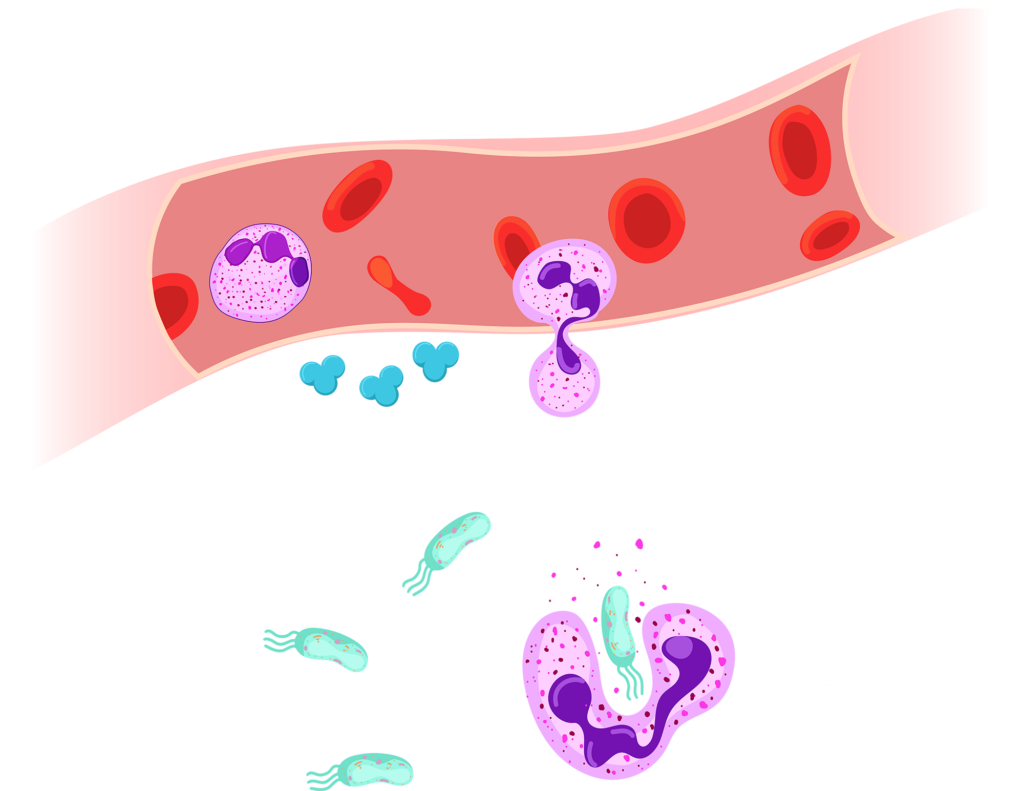
When those pathogens are destroyed, they are broken up into small fragments. Some of those pieces are displayed on the surface of the phagocytes to be recognized by cytotoxic T cells. The cytotoxic T cells will then destroy the phagocyte with the pathogen inside.
We have one more thing to cover about the nonspecific innate immune response. In addition to the action of the phagocytes and T cells, there are proteins that are part of the complement system.
These proteins will also get activated. When that happens, they will recruit more white blood cells to the site of infection and trigger an inflammatory response.
This causes swelling, redness, and pain that are typical of inflammation. The goal is to flood the area with more immune system components to help fight off what can get pretty nasty.
The Adaptive Immune Response
This is specific – We’re trying to eliminate specific pathogens that our bodies recognize because we were previously exposed to them.
It involves two types of white blood cells – B lymphocytes (B cells) and T lymphocytes (T cells).
B cells are part of our antibody-mediated immunity. They recognize a specific antigen, bind to it, and digest it. They then present fragments of that antigen on their surfaces to be recognized by helper T cells. Those helper T cells will then trigger those B cells to mature into antibody-producing B cells (plasma cells).
Now that we have more antibody-producing cells, the antibodies can do their part in helping to kill those pathogens. This is called humoral immunity. It’s the specific part of our immune system that involves antibodies.
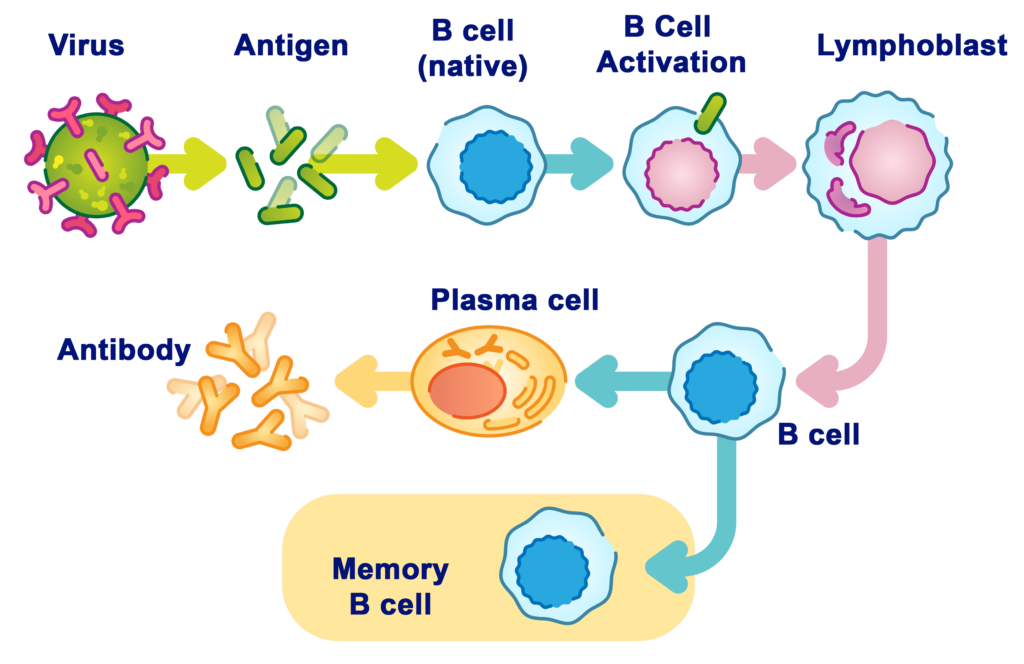
There’s also cell-mediated immunity. This involves the Cytotoxic T cell (Killer T-cells). After recognizing an antigen presented on the surface of an infected cell, they will kill that infected host cell.
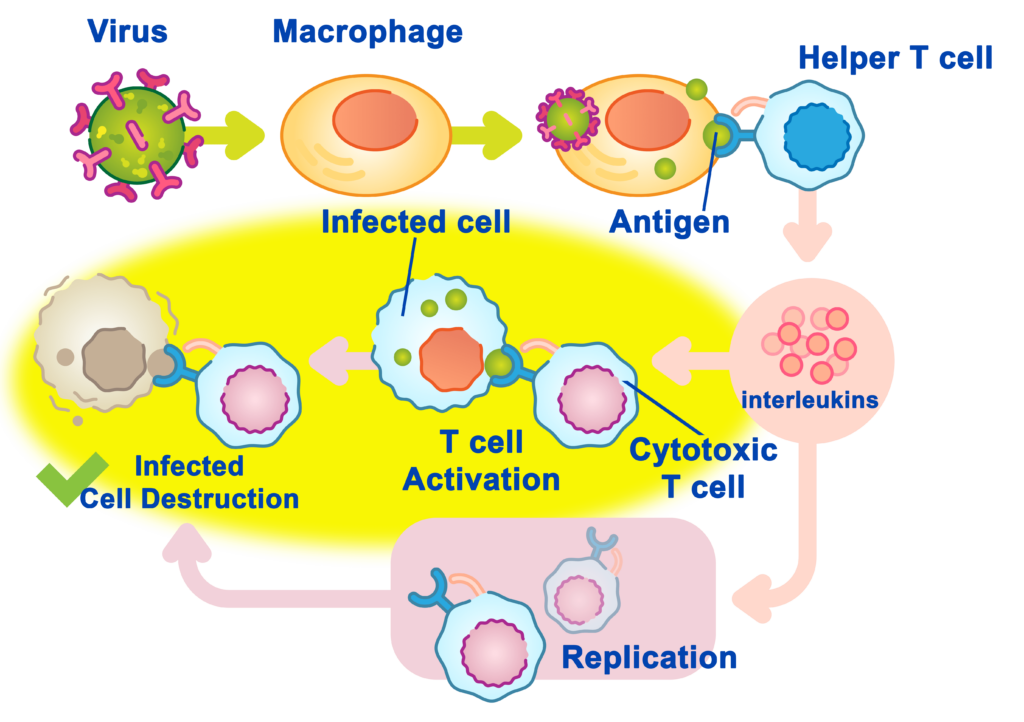
So those are our three lines of defenses: the physical and chemical barriers, the innate immune system, and the adaptive immune system.

